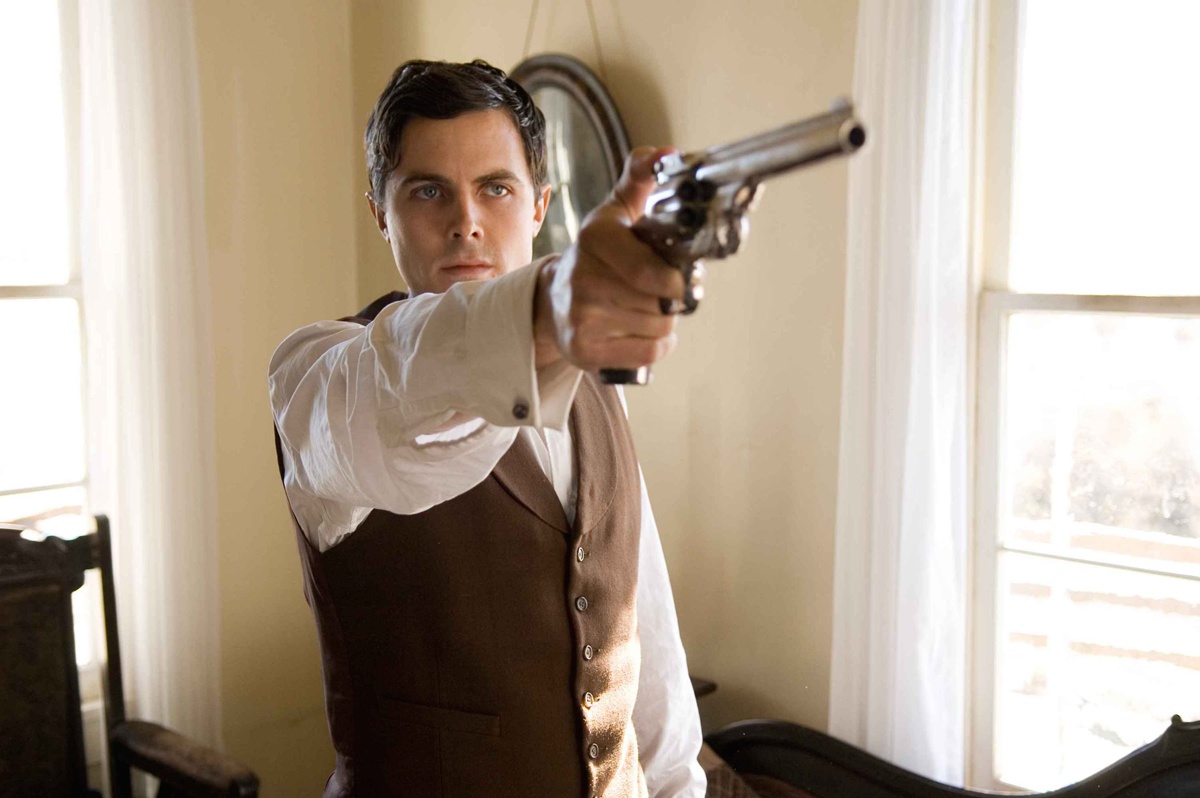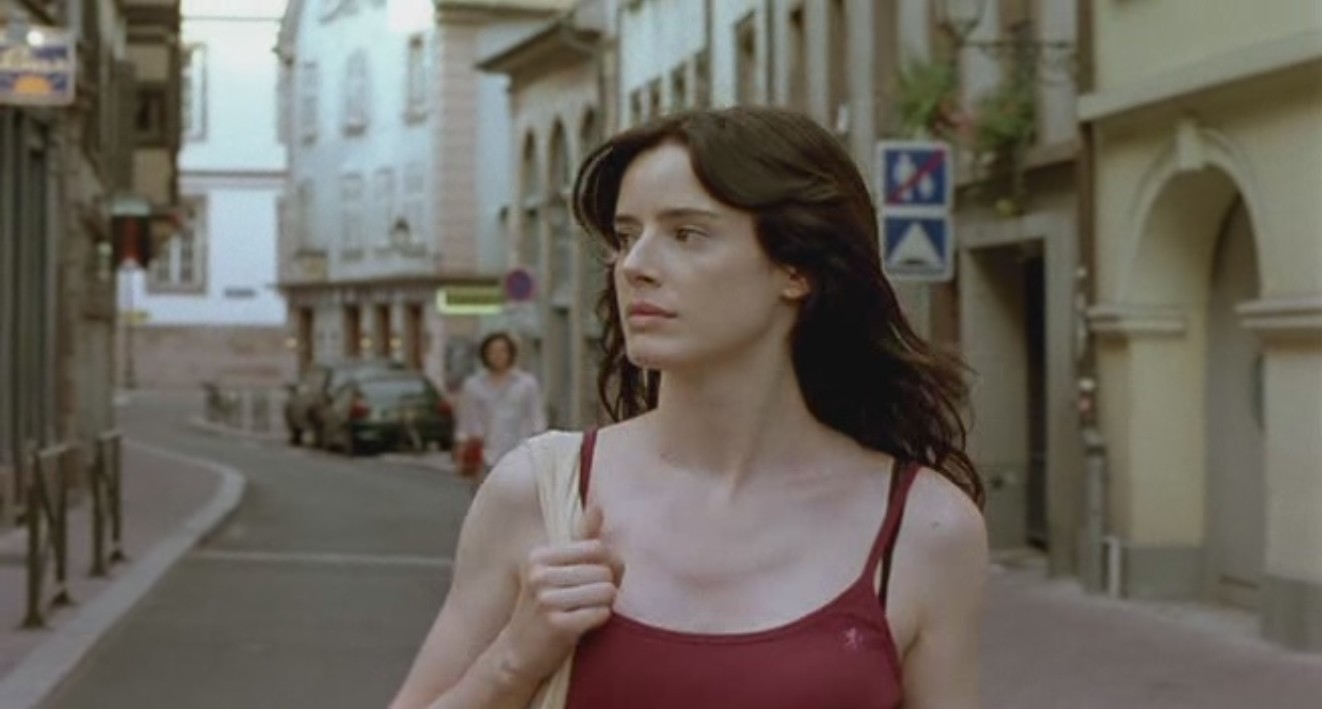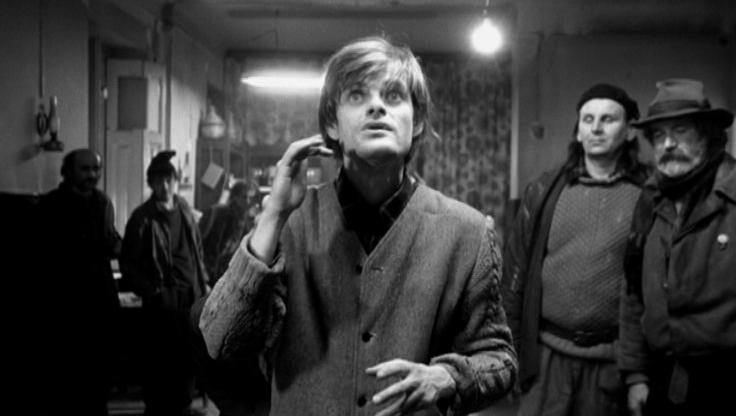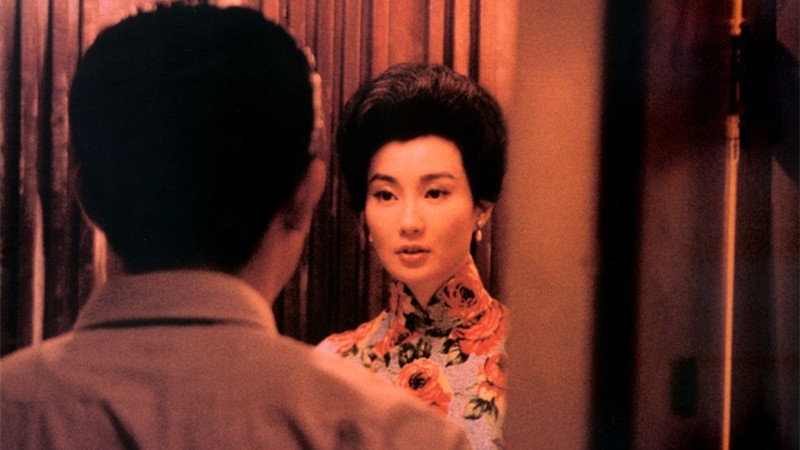5. The Assassination of Jesse James by the Coward Robert Ford (2007)

Progressing as an old folklore, ballad or tale of the Old West where Robert Ford and Jesse James existed and once roamed is pure cinematic poetry. Andrew Dominik created a film where no aspect or element was ignored, and it’s like an old poem from its time.
The long stares by Casey Affleck and Brad Pitt can almost be dissected into an analysis. Each frame of them, separately or united, suggests a form of romanticism of the Old West. Similarly, Roger Deakins’ old photography and lite cinematography, Nick Cave and Warren Ellis’s score, and a voiceover by Hugh Ross add more substance to this film.
If this story was told another way, it would have been like another OK Corral story, but through the mysticism of the James tale, Dominik saw all the potential for this and tried to capture a “feeling of destiny and density and predestination.” The actual written poem could only aim to achieve a similar feeling and response.
As the repetition of the wandering around aimlessly in the fields to the settlement in another town, the narrative constantly loops around to make the viewer connect to the overall tone of the film. Domenik didn’t just tell a straight narrative, but wanted to explore the little moments in a western that has been overlooked and as a result, he created a new type of western that has never been repeated.
4. In the City of Sylvia (2007)

Probably the simplest film on this list as a man simply looks for a woman in the city of Strasbourg. A man, played by Xavier Lafitte, searches for a woman he asked directions from more than six years ago and as a result, Jose Luis Guerin crafted a film of longing, a sense of time and space, and gazing curiosity.
There are some films, say Malle’s “Le Feu Follet,” that have a sequence where the camera focuses on people walking and interacting in a city, but not for a whole 30 minutes, in which it never seems dull. The film takes place in long sequences, such as at a cafe where he sees the point of view of the man. We start to become part of the gazing and curiosity of this lost encounter. Was it love at first sight? A missed opportunity? We have to fill in the backstory as there are no flashbacks or exposition to what actually occurred six years earlier.
A scene that involves a lookalike of Sylvia by Pilar Lopez de Ayala makes us gasp that the man might actually be successful, not just a hopeful romantic. We can all relate to the man and wonder what it would have been like to develop an actual affair, relationship, or romance with a person whose beauty stunned us. Maybe this film is the result of taking action in a sort of way. Regardless, the film proves that even the simplest settings, design, and story can make for an engaging, searching, and fleeting moments in a film.
3. Werckmeister Harmonies (2000)

Bela Tarr has never been one to fill in the blanks or spoon-feed the audience. This film demands not only multiple viewings, but intense research on the subject matter. As the film begins, Lars Rudolph’s Janos Valuska explains and conducts a dance on the eclipse of the sun to drunken patterns of the town. The title is not explicitly stated, but sets up this mysterious film.
The film takes place in long takes in stunning sequences such as the destruction of a nursing home, to many scenes involving a giant dead whale in the town center. We experience discomfort, yet are somewhat comfortable with it due to Tarr’s vision and use of camera work, Mihaly Vig’s score, black-and-white cinematography, and overall atmosphere created.
The film itself is almost an open-ended question, much like poetry is. It presents such a clear point of view from the author, yet allows for interpretation and personal connection to be established, strictly and obviously on the individual. With every viewing of the film, one can walk away with a different viewpoint – what does the whale mean? Is this an assault on capitalism? Is it a critique of post-communism Eastern Europe? Why do we exist in the solar system?
Bela Tarr creates a maddening film that is purely poetic in visual, literate themes in his own terms of cinema.
2. In the Mood for Love (2000)

A film filled with slow-motion walking, glances and contemplation by the lead actors, a haunting score, whisperings, smoke lingering under a neon light, painterly composition, and the list goes on and on. Wong Kar-wai’s film with Tony Leung and Maggie Cheung might be the quintessential film on yearning for romance, fragility, and daunting companionship.
As the two leads form a bond as their spouses are having an affair, we are thrust into the lives of Cheung and Leung. No frame shot by Christopher Doyle and Mark Lee Ping Bin is wasted and none fail to represent the isolated connection between Mr. Chow and Mrs. Chan. The lucid score heightens how these characters are drowning in misery and feel abandoned, but misery loves company, thus resulting in a unique compatibility. Both of them want more and want to act but stay reserve in the most aching ways out of respect, culture, and who knows what?
Take the motif of them walking by one another and somehow now exchanging a direct glance: the tempo slows down, the music by Shigeru Umebayashi pours in, their bodies almost brush against one another, and it’s as almost like a poem was transcribed on the silver screen. Wong has explored the longing for romance, but here he enters new territory.
As the film continues and concludes, we know we are experiencing a film that will linger in the mind forever, just as Mrs. Chan and Chow will contemplate what could have been.
1. The Tree of Life (2011)

A film that flows like poetry from the grandest to the most intimate scale in Terrence Malick’s creation. The film shifts between the O’Brien household in 1950’s Waco, Texas, to the creation of the universe, to the disillusionment of the oldest child in the modern world. As we hear in the beginning of the film, Jessica Chastain’s Mrs. O’Brien says in voiceover, “There are two ways through life, the way of nature or of the way of grace,” the latter which is represented by her and we somewhat witness both during the film.
The oldest of the three boys, Hunter McCracken as Jack, struggles to come to terms with the way of living. We see him in the future as Sean Penn struggling to find purpose in a steel and glass man made world. As this unfolds, we see stunning, non-CG but microscopic photos of the chemicals and nature interacting representing the creation of the universe, composed with the strict, authoritative Mr. O’Brien played by Brad Pitt and the angelic Chastain as Mrs. O’Brien.
From a floating Chastain or her interaction with a butterfly, to a dinosaur gently stepping on another or to the unification of timelines in a mystical landscape, the film is not short on any iconic, poetic imagery, sounds, or narrative device. Since Malick had been developing the story since the 1970s, he was finally able to achieve his vision of vast humanity and otherworldly composition.
The film represents many personal aspects of the private director, such as his own childhood in Waco in the 1950s and the suicide of his brother. The film is pure Malick from the natural light sets, voiceover, and classical music; it is hard to distinguish this not only as a film, but as a true work of art in the 21st century. It’s a work that truly must be experienced in the right mindset to appreciate what Malick did here. Maybe words are just not good enough.